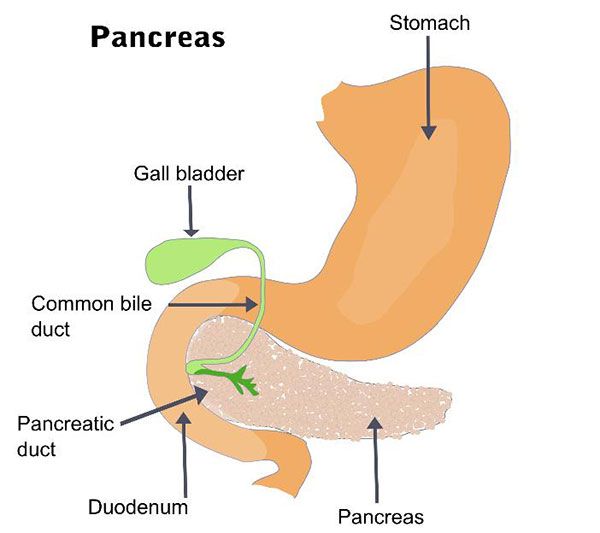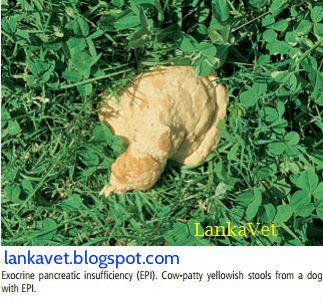 Exocrine pancreatic insufficiency
(EPI) is a syndrome of maldigestion and malabsorption, caused by insufficient
synthesis and secretion of digestive enzymes by the exocrine portion of the
pancreas. It is much more common in dogs than cats. It is also referred to as
Pancreatic Hypoplasia or Pancreatic Acinar Atrophy (PAA).
Exocrine pancreatic insufficiency
(EPI) is a syndrome of maldigestion and malabsorption, caused by insufficient
synthesis and secretion of digestive enzymes by the exocrine portion of the
pancreas. It is much more common in dogs than cats. It is also referred to as
Pancreatic Hypoplasia or Pancreatic Acinar Atrophy (PAA).
Pancreas has two primary
functions;
- Endocrine cells produce and secrete hormones, insulin, and glucagon.
- Exocrine cells produce and secrete digestive enzymes.
Causes of this disease
EPI is the inability of the
pancreas to secrete digestive enzymes: amylase to digest starches, lipases to
digest fats, and proteases to digest protein. Pancreatic acinar atrophy is the
most common cause of EPI in dogs, while chronic pancreatitis is the most common
cause in cats. Less common causes of EPI in dogs and cats are pancreatic or
extra-pancreatic masses that lead to obstruction of the pancreatic duct.
Lack of pancreatic digestive
enzymes may lead to maldigestion & malabsorption, therefore; the nutrients
remaining in the intestinal lumen lead to loose, voluminous stools and
steatorrhea (excess fat in stool). It also
causes weight loss and may lead to vitamin deficiencies. Due to the lack of
absorbed nutrients, the body starves: muscle mass wastes away, and bones may
also be affected.
Clinical signs
- Voracious appetite - Polyphagia
- Rapid Weight loss
- Intermittent watery diarrhea or vomiting
- Eating stools – Coprophagia
- Eating non-food items - Pica
- Dry, dull, or brittle coat
- Feces is pale or grayish, loose, and voluminous and may be malodorous
- Increased rumbling sounds from the abdomen, and passing increased amounts of gas
- High fat content of the feces can lead to a greasy appearance of the hair coat, especially in the perianal and tail region of cats.
- Temperament changes showing fear or aggression
Diagnosis
- Clinical signs
- Fecal Protease Test - Determining the levels of digestive enzymes in the stool
- Serum Trypsin-like Immunoreactivity Test- Determining the levels of certain digestive enzymes in the blood
- Treatment involves replacing the dog's pancreatic enzymes: Freeze-dried and ground-up extracts of pig and cattle pancreases could be given. Accurate dosing is more difficult with the raw pancreas, but in general, a 45-pound dog would need to receive 3 to 4 ounces of the chopped pancreas. The raw pancreas can be frozen at 4ºF for up to 3 months and still retain its enzyme activity. They can also be formulated either into tablets or powder. Ex. Viokase-V, Pancreatin 6X, Bio Case V. Powder is more effective than tablets, capsules, and especially enteric-coated products. Initially, 2 tsp/20 kg body wt should be given with each meal for dogs and 1 tsp/cat with each meal for cats.
- Concurrent antacid therapy has little effect on overall digestive ability
- Oral vitamin E supplementation or intra muscular injections of vitamin B-12
- A low fat, low fiber, highly digestible diet





No comments:
Post a Comment